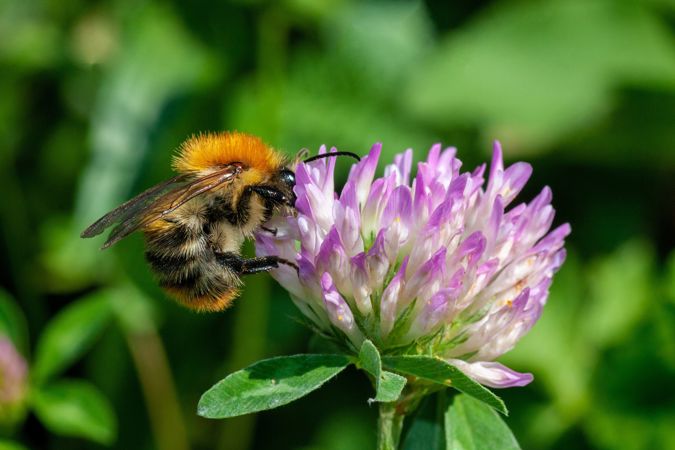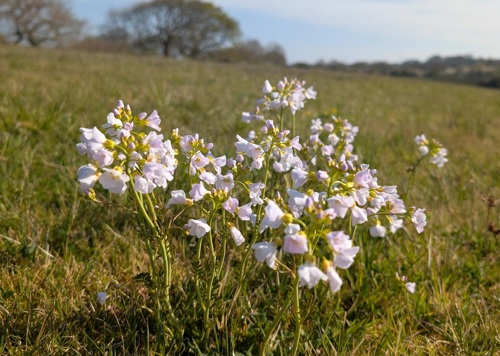No Mow May: why we're letting the grass grow

Across Wales, the hum of lawnmowers is being replaced by the gentle buzz of bees.
We’re once again joining the No Mow May campaign by stopping non-essential mowing on the land we manage – and we’re encouraging everyone to get involved.
Backed by growing evidence and real results, No Mow May is a simple but powerful way to support biodiversity, help pollinators, and let nature do what it does best: grow, bloom and thrive.
Letting the grass grow to help nature recover
The scale and rate of biodiversity loss across Wales is accelerating. Half of the UK's 27 bumblebee species are in decline, and of the 43 species of butterfly seen in Wales, 10 are in severe decline and 17 are declining.
There are several reasons for the decline in pollinators, such as climate change, pollution and pesticides, and change in how land is managed.
Early spring is when many pollinators emerge hungry from hibernation, and when flowers are scarce, they can struggle to survive. A simple patch of long grass, with a few dandelions, buttercups or clover, can be a lifesaver for them.
Stopping mowing in May will help biodiversity by allowing spring plants to set seed and grow to provide nectar and pollen for pollinators, such as bees and butterflies.

Stopping mowing on the land we manage during May
Throughout the growing season, we cut grass and vegetation in areas such as forests, nature reserves, riverbanks, flood defences and reservoir embankments.
We will stop cutting grass on the land and assets we manage during May unless it’s absolutely essential. For example:
- to manage access to forests and nature reserves to make sure people are safe when they visit.
- to easily inspect flood defences and repair them if needed, helping to reduce flood risk to communities.
- for nature conservation, for example to manage an invasive species or to benefit species in a certain area by cutting the vegetation.
Say no to the mow - how you can get involved
We need to act now to protect our pollinators.
Last year, we saw an incredible response. Letting the grass grow led to wildflowers blooming across our sites. This is why we manage all of our sites to make them as pollinator friendly as possible and to provide food and shelter for other species.
You don’t need to manage huge areas of land to make a difference. Our collective effort – though small in scale individually – can make a big difference for nature.
If you’ve got a lawn or even a patch of green in your planters – try leaving it uncut during May. Let the flowers bloom, watch the bees arrive, and enjoy the wild beauty that follows.
And it’s not just at home, there are things we can all do to make it easier for pollinators to survive. These can be relatively simple, such as managing grass verges in a more sensitive way, or leaving wild areas around our offices and public buildings.
Here’s what you can do:
- Don’t mow during May – even if it’s just a section of your lawn.
- Let the flowers bloom – resist the urge to pull those weeds. What looks like a weed to us might be a feast for a hungry bee.
- Share your wild patch on social media using #NoMowMay
- Talk to your community – ask your neighbours, local school, workplace or council if they can take part too.
- Keep it going all year round - make your gardens pollinator-friendly by not using pesticides, not mowing the lawn as often, and growing pollinator-friendly plants.
Making space for nature to thrive
By taking part in No Mow May, we’re giving nature a breather. We’re creating the conditions it needs to recover and thrive – and showing that everyone, from national organisations to individual households, has a role to play.
Join us in saying no to the mow this May.
To find out more about how you can help support pollinators, visit our Love Pollinators page or visit Plantlife’s website to learn about the No Mow May campaign.
Follow us @NatResWales and share your wild patches with #NoMowMay
